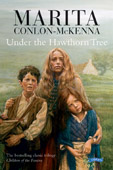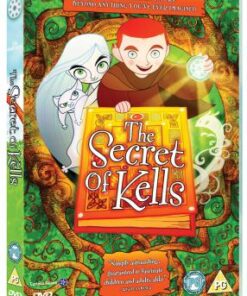Under the Hawthorn Tree (Dvd)
Author: Conlon-McKenna, M
Reading Age: 9 to 10 Fourth Class
Publisher: O\'Brien Press
Illustrator: n/a
ISBN-13: 9781847172495
Number of pages: 0
Product Description
A film treatment of Marita Conlon-McKenna’s acclaimed novel, which brilliantly recreated the Great Irish Famine of the 1840s through the story of three young survivo... Read more
€24.59 Original price was: €24.59.€23.37Current price is: €23.37.
Only 2 left in store

Product Description
A film treatment of Marita Conlon-McKenna’s acclaimed novel, which brilliantly recreated the Great Irish Famine of the 1840s through the story of three young survivors.
Produced by Young Irish Filmmakers, and now available for the first time on DVD.
A study guide to this film and the book is available for free.
Ireland in the 1840s was in the grip of a terrible famine. When their father and mother go missing in a desperate search for food, the three O’Driscoll children, Eily, Michael, and Peggy, are left to fend for themselves. Starving and in danger of the dreaded workhouse, they escape. Their one hope is to find the great-aunts they have heard about in their mother’s stories. With tremendous courage they set out on a journey that will test every reserve of strength, love, and loyalty they possess.
Worksheets available on request
Author Biography: Marita Conlon-McKenna is one of Ireland’s most popular children’s authors. Her other books include The Blue Horse, No Goodbye, Safe Harbour, and In Deep Dark Wood.
Books Ireland
As gripping a story as the original, embracing not just a sense of place-Ireland-but a sense of time and history . . . Not a word, spoken or unspoken, nor an emotion, is wasted.
School Library Journal
The horrors of the potato famine in Ireland vividly leap from the pages of this first novel. The O’Driscolls are a poor family whose lives depend on the potato crop. When it fails, they are doomed. The father has left to find work elsewhere, and when he does not return, Mrs. O’Driscoll goes to find him, leaving feisty Eily, the oldest, in charge of her two younger siblings. She also does not return, forcing the children to set out to find two great-aunts about whom they’ve heard stories; their alternative is going to the workhouse. At this point, the story becomes one of resourceful and determined children seeking to stay together in the hope of being reunited with the rest of their family. The tale is episodic, but should sustain the interest of its target audience. The characters are largely two-dimensional and are sometimes mere vehicles to help tell the history of the period. The book succeeds on this level, and readers are left with a glimmer of hope as the children reach their elderly aunts, but with their future still a mystery. A worthwhile addition. –Renee Steinberg, Fieldstone Middle School, Montvale, NJ









